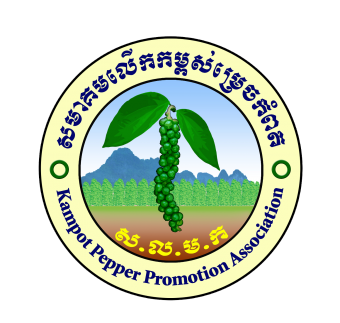Certificates of authenticity of Kampot pepper
Authentic Kampot pepper must always be accompanied by four compulsory certificates that determine its quality, uniqueness, and origin. In addition, a ‘Lot Number’ must always be stated on the packaging. This number allows the pepper to be tracked directly back to the specific farmer that produced it.

Trademark - proves the origin and quality of Kampot pepper. There are many cheap copies around the world, with names such as ‘pepper from Kampot’, ‘pepper Kampot’ or ‘pepper from Cambodia’, however, these have nothing to do with the real Kampot pepper. So, if your pepper doesn’t have all four certificates and a lot number, it’s not the genuine Kampot pepper.

Protected Geographical Indication - Kampot pepper became the first Cambodian product and the only pepper in the world to be given this status, similar to Champagne in France. It is a guarantee that your pepper has been grown in the most appropriate climatic conditions in the world, complying with the strictest standards of farming methods and techniques.

External control - the international regulator, Bioagricert, is one of the largest certification companies in the world. It checks and certifies products containing natural materials resulting from organic farming. In this facet, it is able to grant PGI status to Kampot pepper.

Specification of a given protected geographical indication - a specific list of rules that a given country must meet within PGI, from planting the crops to tracking the peppercorns. In Cambodia, the emphasis is on strict organic compliance and a ban on all chemical fertilizers.

Registration of Kampot pepper as GI product in 32 countries through Lisbon agreement - With support of WIPO (World Intellectual Property Organization) and MoC, Kampot pepper has been registered as a GI product via Lisbon agreement on 14th December 2020.

An Inter-Professional Association - The Kampot Pepper Promotion Association (KPPA), registered in 2008, is in charge of managing the Kampot Pepper geographical indication. It defines the Book of Specifications, validates the land plots, implements the internal controls and watches over the promotion and the correct use of the name “Kampot pepper”.

Thailand Geographical Indication - Kampot pepper has been registered as a GI product in Thailand since 17th March 2017.